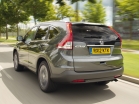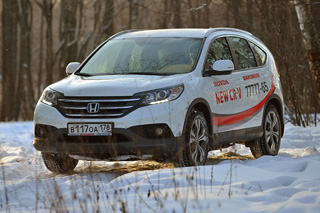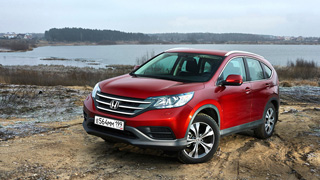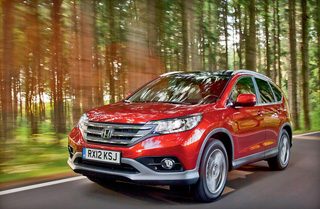Honda CR-V test drive since 2011 crossover
Little friends of real women
A few pages before you could get acquainted with the test of four very expensive (50-80 thousand dollars) SUVs. Without waiting for the next issue of the magazine, we offer you another series on the same topic of three Japanese, much less expensive, parquet all -terrain vehicles.There are no little known beginners among the Toyota Rav4, Honda CR-V and Suzuki Grand Vitara). Toyota RAV4, rightfully considered the ancestor of the road all -terrain vehicles, is represented by a model of the latest, second generation. The popular Honda CR-V throughout the world in the Russian market for the second year in a row, confidently holds the second place in terms of the number of cars sold among new imported SUVs. Suzuki Grand Vitara and abroad, and we are in demand as one of the least expensive jeeps (not counting the Korean Kia Sportage and the Russian Niva).
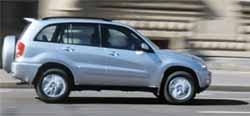 Design and layout
Design and layout All three cars, without claiming the status of full -fledged crooks, have nothing to do with conventional cars (with the exception of power units) in the design and layout). This means that their bodies and suspensions, unlike, say, Subaru Forester, are designed from scratch and taking into account off -road operation. Suzuki Grand Vitara: a frame body, a longitudinal engine connected if necessary, an unreasonable rear axle, is most traditionally compiled in the present-resistant. The rest use the supporting body design, transverse power units and completely independent suspensions. They have all -wheel drive either constantly turned on (Toyota), or an automatically connected rear axle when slipping the front wheels (Honda). For testing, we picked up the most popular five -door modifications with two -liter engines and automatic gearboxes.
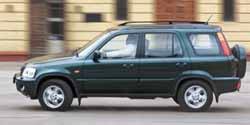 Appearance
Appearance All three Japanese jeeps make a completely different external impression. Toyota is distinguished by the most memorable and expressive appearance. The appearance of the RAV4 exactly corresponds to the purpose of the car is not an all -terrain vehicle for hard work in off -road, but transport for a surf, skier or a fan of mountain bikes. In accordance with this, in the design of the car, both off -road proportions and sports motifs were reflected. In the new RAV4, designers managed to realize difficultly compatible qualities: functionality, harmonious and originality. In this regard, the new Rav4 is a worthy relative of the impressive baby Toyota Yaris.
The design of Honda CR-V is based on other ideology external restraint and conciseness. With the exception of the outer disposal of the spare, Honda is devoid of any off-road attributes. CR-V gives the impression of a purely practical, modest, but elegant station wagon, who does not claim to be playboy. And, as a good sales of this model shows, a purely all -terrain vehicle is far from important for all buyers of parquet passes.
 Perhaps less than others were pleased with the appearance of Suzuki Grand Vitara. An ordinary station wagon, significantly weighted by a massive lower bandage (bumper painted in the color of the body, wheel niches and door pads). It seems to us that the first generation of Suzuki vitara was even more interesting.
Perhaps less than others were pleased with the appearance of Suzuki Grand Vitara. An ordinary station wagon, significantly weighted by a massive lower bandage (bumper painted in the color of the body, wheel niches and door pads). It seems to us that the first generation of Suzuki vitara was even more interesting. If in the outer design of cars, expressiveness and recognition are of great importance, then in the style of the interior for many it is more important, calm unobtrusive, which may not be remembered, but does not irritate anything. This approach is characteristic of the interior design of so many Japanese cars, including Honda CR-V and Suzuki Grand Vitara. The design of the front panels of these cars, differing in contours and details, leaves a very similar impression. In Honda CR-V, it is slightly richer due to a horizontal insert made of soft plastic of a lighter shade. I am pleasantly surprised by the leather decoration of the salon. Suzuki uses only hard plastics with a texture type Soft-Look, which successfully imitates a soft surface.
The Toyota Rav4 interior decoration also uses high -quality hard fakes for soft plastics, but in general the design is bright, in a sporting spirit. The style of the interior of the new RAV4 liked more than that of competitors, although it is impossible not to criticize silver but clearly not from a real aluminum of the overlay on the central console.
 Ergonomics, capacity
Ergonomics, capacity Turning from the appearance to the ergonomics of the driver's workplace, you immediately note that the main difference in the form and rigidity of the seat. In RAV4, these indicators are optimal, the seat is conveniently covered by the body and provides good side support. Suzuki is too soft, amorphous. CR-V has an overly convex lumbar back of the seat back and insufficient lateral support. However, thanks to the adjustments of the seat (the most Honda CR-V has them) and the steering column (only by inclination) the search for a convenient work pose in all three cars does not cause significant difficulties. Another obvious difference relates to the location of the automatic box selector in Honda CR-V, it is American in the steering column, in Suzuki and Toyota in European between the seats. The European location seems more convenient for us, although in the absence of a manual switching mode, this does not matter. But the transfer of the lever to the steering wheel frees the passage between the seats, although the possibility of walking around the cabin in a small car can hardly be considered an important advantage.
 The most capacious car should have been the most spectacular car, the longest in both the base and the dimensions. The more surprise to Toyota Rav4 has become the greater surprise. The space for the legs of the rear passengers in both cars is worthy of large class E sedans, though provided that Toyota has the rear seat as much as possible back. It should be noted here that, in addition to adjusting the back of the back seat, RAV4 also has a very effective longitudinal adjustment that moves the second row of seat back to 150 mm. At the same time, the luggage volume decreases from 500 liters to 400 liters, nevertheless remaining a little more than that of Honda CR-V. The fact is that RAV4 has a larger trunk depth, and CR-V has a part of the trunk height occupies a folding table for picnics. It should be noted that the rear seats in RAV4 can not only fold, but also get out of the car. Suzuki Grand Vitara is inferior to both competitors in terms of the length of the cabin and the volume of the trunk.
The most capacious car should have been the most spectacular car, the longest in both the base and the dimensions. The more surprise to Toyota Rav4 has become the greater surprise. The space for the legs of the rear passengers in both cars is worthy of large class E sedans, though provided that Toyota has the rear seat as much as possible back. It should be noted here that, in addition to adjusting the back of the back seat, RAV4 also has a very effective longitudinal adjustment that moves the second row of seat back to 150 mm. At the same time, the luggage volume decreases from 500 liters to 400 liters, nevertheless remaining a little more than that of Honda CR-V. The fact is that RAV4 has a larger trunk depth, and CR-V has a part of the trunk height occupies a folding table for picnics. It should be noted that the rear seats in RAV4 can not only fold, but also get out of the car. Suzuki Grand Vitara is inferior to both competitors in terms of the length of the cabin and the volume of the trunk. Acceleration dynamics, handling, brakes
In the dynamics of acceleration among participants in this test there are two leaders (Toyota and Honda) and one outsider (Suzuki). Actually, Rav4 could become a sole winner, if it were not for the increased thoughtfulness of automatic transmission when switching to Kick Dawn mode. In Honda CR-V, the pedal reaction to the floor is triggered faster and smoother. Suzuki also sins with the thoughtfulness of the machine gun, but this is also aggravated by the obviously lower capabilities of the motor. Having arranged impromptu competitions on a winding and unloaded suburban highway, we made sure that Honda and Toyota could stay on equal terms, and Suzuki is behind. Of course, not only the possibilities of power units, but also the characteristics of controllability affected here.
 By the way, the alignment is generalized about controllability as in the dynamics of acceleration, with the only difference being that the Suzuki lag is even larger. Honda and Toyota are distinguished by good passenger behavior on a solid road. Moreover, Toyota is a little more acute a little more acute the reaction to the rotation of the steering wheel (steering sensitivity), a little less than the body's roll in the bend. But Honda CR-V also has an advantage of a more intelligible reactive effect (information content) of the steering. Suzuki is perceived as a car belonging to the previous generation. The steering is less accurate, with sluggish sensitivity and poor informativeness. Rapid movement along imperfect asphalt necessitates constant steering, and irregularities in the bend are rearranged. Suzuki can still win in comparison with VAZ classics, but not with modern analogues.
By the way, the alignment is generalized about controllability as in the dynamics of acceleration, with the only difference being that the Suzuki lag is even larger. Honda and Toyota are distinguished by good passenger behavior on a solid road. Moreover, Toyota is a little more acute a little more acute the reaction to the rotation of the steering wheel (steering sensitivity), a little less than the body's roll in the bend. But Honda CR-V also has an advantage of a more intelligible reactive effect (information content) of the steering. Suzuki is perceived as a car belonging to the previous generation. The steering is less accurate, with sluggish sensitivity and poor informativeness. Rapid movement along imperfect asphalt necessitates constant steering, and irregularities in the bend are rearranged. Suzuki can still win in comparison with VAZ classics, but not with modern analogues. It may be the only nomination of this test in which it is difficult to highlight the leaders and lagging behind are braking properties. All rivals are equipped with ABS systems that did not cause any significant complaints.
With uniform movement, all three cars are quite silent quite well, neither aerodynamic noises, nor the sound of tire rolling, nor the voice of the motor are especially annoyed. But with intensive acceleration, the picture changes dramatically. Toyota only slightly increases the soft timbre of its motor, while the Honda CR-V and Suzuki Grand Vitara engines express their protest, and Suzuki does it especially sharply.
Compared to conventional cars, all three parquet SUVs are characterized by increased energy intensity of the suspension, which allows them to swallow significant defects in our roads quite painlessly. At the same time, a sharp little thing is transmitted quite clearly. In general, in terms of smoothness in front of Honda, with a slight lag behind her Toyota and Suzuki lags behind them.
Cross -country ability
In the patency section, Suzuki Grand Vitara was able to partially compensate for the losses in previous nominations of this test. The main advantage of Suzuki in the presence of a lowering gear, which allows in particularly difficult conditions to move in tractor mode. In addition, Grand Vitara has the largest entrance angle and a rigidly connected front wheel drive.
The second largest, due to the automatic blocking of the central differential and the rear differential of increased friction, is Toyota Rav4. Yes, and in geometric patency RAV4 is only a little inferior to Suzuki.
Toyota Rav4
+
1. Expressive design
2. Manageability
3. The dynamics of acceleration
4. Non -smell
-
1. High price
Honda CR-V
+
1. Manageability
2. The dynamics of acceleration
3. Reasonable price
-
1. Relatively
weak off -roads
Suzuki Grand Vitara
+
1. Low
price
2. The advantages
in cross -country ability
-
1. Disadvantages
controllability
The weaker of all in the off-road is the Honda CR-V with the longest body overhangs, the smallest angles of the entrance-site and without any locks. True, as we are convinced, the hydraulic coupling connecting the rear wheels drive works quickly enough after the start of the front slipping, but the fact of slipping in critical conditions can become an insurmountable obstacle. Little remark: if you decide to test the limits of the patency of any of these cars, keep in mind in advance that not one of them, as they say, is not suitable for our field.
Results
When summing up the results of this comparative test, the obvious conclusion seems to be suggested: Toyota Rav4 and Honda CR-V lead almost a nostril in the nostril with a clear lag of Suzuki Grand Vitara. Moreover, Toyota is still ahead of Honda, at least due to freshness, novelty and greater external expressiveness. But all this, excluding an important factor in value. The five-door RAV4 with an automaton costs unreasonably many $ 37 thousand, CR-V from 27,900 thousand, and Grand Vitara only 24 thousand. It turns out that by choosing CR-V instead of RAV4, you can save on Peugeot 206 for the spouse, and the difference Between Toyota and Suzuki allows you to count on the purchase of Skoda Octavia. It is hoped that the price of RAV4 is set for a new one and will subsequently be reduced, but now the most reasonable compromise is the purchase of Honda CR-V. As for Suzuki Grand Vitara, such a price with quite acceptable quality is a big plus. As a moderately expensive alternative for the three heroes of our dough, you can offer Land Rover Freelander and Subaru Forester. Freelander is distinguished by off-road external expressiveness, and Forester, especially with a turbocharger engine, the choice of an enthusiastic driver.
Roman Sergeev
Photo by Alexander Nozdrin
Source: Cars



